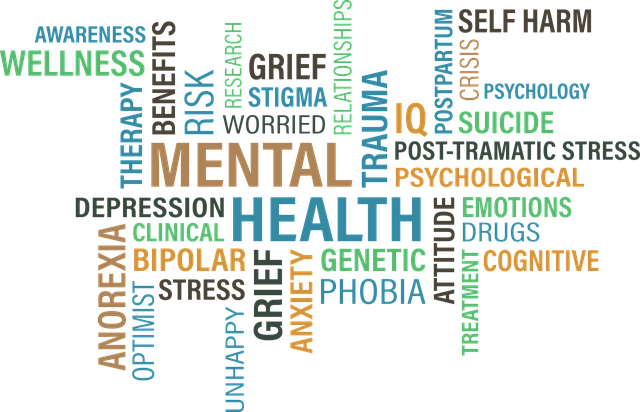
Is There a Link Between Mental Illness and Violence?
Although we sometimes think that mental illness is rare and wouldn’t happen to us or to a loved one, the reality is that nearly one in five adults in the U.S. experiences mental illness in a given year.
What is mental illness?
Mental illness refers to mental, behavioral, or emotional disorders that can cause mild to severe functional impairment and interfere with major life activities. Said simply, mental illness affects the way a person thinks, their feelings, mood, their ability to enjoy life and their capacity to function at school, work and home. Some examples of mental illness are: Major depressive disorder, posttraumatic stress disorder, bipolar disorder, schizophrenia and personality disorders.
Unfortunately, people suffering from mental illness often go without treatment for months, years, and sometimes, even their entire lives. Lack of adequate mental health treatment places individuals with mental health issues at higher risk for serious negative outcomes such as incarceration, victimization, suicidality and violence.
Stigma around mental illness can lead people to think their symptoms are not valid or that what they are experiencing is a sign of weakness or somehow their fault. These types of beliefs could not be further from the truth and only prevent people from seeking needed mental health care. There’s clear evidence that mental illness is not the fault of the person who has a mental health condition but is caused by environmental and biological factors. Psychiatric conditions are real medical conditions that can be treated effectively.
Are mentally ill people dangerous?
Although the media has helped portray the mentally ill as inherently dangerous, the reality is that most violent crimes are committed by people who are not mentally ill. Individuals with severe mental illness are actually more likely to become victims of violence than perpetrators.
With that said, mental illness can increase the likelihood of violent behavior in a small portion of individuals, particularly when other risk factors are present. For instance, the risk of violence is 3 to 5 times greater for men with schizophrenia, and 4 to 13 times greater for women with schizophrenia. Some diagnoses associated with violence include psychotic disorders, bipolar disorder, PTSD and some personality disorders.
Serious mental illness has been found to be associated with mass homicides in half of the cases. Common symptoms in perpetrators of mass shootings include acute paranoia, delusions, and depression.
Mentally ill individuals are also at risk for harming themselves. Up to 50% of individuals diagnosed with schizophrenia or bipolar disorder attempt suicide at some point in their lives.
Overall, when mentally ill individuals act violently, it is not only due to their mental illness. The presence of certain risk factors increases the likelihood of perpetrating violence in individuals with psychiatric disorders.
Risk factors that increase the likelihood of violence in the mentally ill
- Lack of adequate mental health treatment.
- A history of physical abuse, juvenile detention and parental arrest.
- Substance abuse.
- Perceived threats.
- Recent stressors such as divorce, unemployment or victimization.
- Lower socioeconomic status.
- Being young and male.
Warning: The First Psychotic Episode
Studies of individuals with serious mental illness show that the risk for committing violent acts including homicide, is greater during the person’s first psychotic episode.
When someone experiences a psychotic episode their brain’s ability to make out reality is affected causing disruptions in their thoughts and perceptions. Psychotic symptoms can include hearing, seeing or feeling things that are not there, becoming fearful or suspicious or having trouble thinking clearly.
Sometimes psychosis can signal the start of a more serious mental illness such as schizophrenia or bipolar disorder. Often psychosis starts to appear in the late teens to early thirties. Psychotic symptoms in these types of conditions tend to appear gradually but the person may not understand what’s happening.
Mental Health Treatment Can Saves Lives
The earlier the diagnosis and start of evidence-based treatment, the better the chances for recovery. This is why it is important to recognize the warning signs of mental illness and seek help and support as soon as possible, whether it is for you or someone you care about. Receiving effective treatment is key in reducing the risk for perpetrating and experiencing violence.
- Mentally ill individuals receiving effective treatment are not more dangerous than the average person.
- When individuals with serious mentally illness act violently, they are generally not receiving or not complying with recommended treatment.
Mental Health Treatment Resources
- Treatment locator: https://findtreatment.samhsa.gov/ or call 24/7: 1-800-662-HELP (4357)
- Peer support groups through the National Alliance of Mental Illness (NAMI) https://www.nami.org/Find-Support/NAMI-Programs/NAMI-Connection
- Support groups for family members https://www.nami.org/Find-Support/NAMI-Programs/NAMI-Family-Support-Group
Hotlines:
- NAMI: 800-950-NAMI
- Suicide prevention, free and confidential support for people in distress, 24/7: 1-800-273-TALK (8255)

